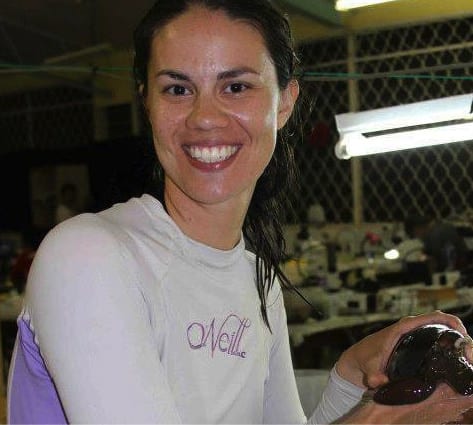A big shout out to G and Lisa for being amazing cruise directors. Crew: BEST CREW!!! Idy is the greatest divemaster we had the pleasure to dive with. He is attentive, safety orientated and knowledgeable. Anto and Kadek made our dining experience a total joy. Food: Excellent, very yummy! The kitchen staff was wonderful even about little things like no garlic in my vegetables ;)
BIOGRAPHY / William Tan

A keen follower of Cousteau’s documentaries of the underwater world, William has been a certified diver since 1994. William Tan has been fascinated with the creatures of the sea since childhood. While studying at the Johns Hopkins University (USA), much of his spare time was spent gazing at the extensive marine collection of the National Aquarium in Baltimore.
Officially, he plays the violin with the Singapore Symphony Orchestra but he still makes time for assignments with dive magazines, tourism organizations and resorts, which allows him to travel extensively in the Asia Pacific region (albeit without his prized antique Italian violin).
William believes that cultivating knowledge and understanding of marine life is the key to long-term concern for and preservation of our rich marine heritage.
As a photographer he is famed for his captivating macro images, specializing in close-up shots of photogenic marine life, but he is a master of all underwater photography skills and a patient teacher. His photographic book “Gorontalo: Hidden Paradise”, published under the commission of the Indonesian government, sees him collaborating with Hong Kong’s leading underwater photographers Stephen Wong and Takako Uno.
- Find out more about William Tan’s photographic style in the magazine interview at THIS LINK
- Keep up to date with this specific trip at our FACEBOOK EVENT PAGE
CRUISE OVERVIEW
Set sail from Sorong at the western edge of Papua, for a 12-day/11-night cruise, ending back in Sorong. Raja Ampat offers the most striking biodiversity on the planet. Famous dive sites such as Misool, Dampier Strait, Manta Sandy and Boo are all on the agenda. This area is known for its vibrant underwater colours but also its majestic landscapes, making it a perfect destination for keen photographers. The only problem with diving here is that you’ll be so spoiled by the near-perfect conditions that you may never want to leave.
As many divers know, Indonesia is located in the very centre of the Coral Triangle and the variety of species seen underwater is truly astonishing. In certain bays and around small islands, you can find more species than in the entire Caribbean. In Raja Ampat, Gerald Allen (world-famous ichthyologist) counted the incredible number of 284 different species of fish during a single dive. In the same area, 465 different species of corals were found. As a result, scientists nowadays believe that this destination is the world’s current no. 1 spot in terms of biodiversity.
In terms of water temperature and recommendations for wetsuits, for most dive sites in Raja Ampat you can expect 27-30C+ (80-86F+) so a 3mm wetsuit or even a skinsuit is usually fine. For repetitive diving days you may start to notice the cooler thermoclines more than usual, so prefer to wear a slightly thicker wetsuit and/or a hood, but usually 3-5mm is sufficient. We don’t recommend gloves as this can encourage divers to touch corals or delicate reef areas, but for night dives, where you could be more likely to bump into fire coral etc, many divers do prefer earning a full length suit and hood/gloves.
KOMODO FOCUS 05 May – 12 May 2031
KOMODO FOCUS
8 Days/7 Nights Labuanbajo – Labuanbajo Cruise Itinerary
Day 1 Embarkation in Labuanbajo
Day 2 Komodo-Flores Channel (4 dives)
Currents in this area can be quite strong and we have to dive according to the tides. There are many dive sites and the sites chosen will be dependent on the currents. Finish the day with a great night dive at Wainilo. Komodo is an excellent place for spotting macro critters and the reefs and corals are spectacular too. See some photos here.
Sebayur Kecil
This island at the east side of Komodo National Park is a perfect spot to do our check-out dive as currents tend to be very mild here. We start the dive on a white sand patch were we can look out for blue spotted stingrays, garden eels and other sand inhabitants. Continuing to the east the reef gets into a beautiful hard coral wall. Leaf scorpionfishes, reef octopus and morey eels are only a few of the inhabitants of this site.
Tatawa Besar
This is a thrilling drift dive that starts off from the northwestern tip of Tatawa and continues down the western side towards 15 to 20 meters of depth. The surrounding fish life is profuse and you will see an endless field of stunning orange soft corals as you glide along. Swim past coral heads inhabited by schools of sweetlips and batfish and look out for turtles feeding on the reef. Mantas have been encountered here as well.